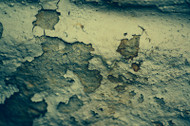A Helpful Guide To Corrosion Control & Protection
By on Oct 25 2013

There are four basic methods for Corrosion Control & Corrosion Protection.
- Materials resistant to Corrosion
- Protective coatings
- Cathodic protection
- Corrosion Inhibitors - modify the operating environment.
In most cases, effective corrosion control is obtained by combining two or more of these methods. Corrosion control should be considered at the design stage of a given facility or system. The methods selected must be appropriate for the materials used, for the configurations, and for the types and forms of corrosion which must be controlled.
- MATERIALS RESISTANT TO CORROSION.
There are no materials that are immune to corrosion in all environments. Materials must be matched to the environment that they will encounter in service. Corrosion Resistance Data is used to assess the suitability of a material in an environment.
- PROTECTIVE COATINGS.
Protective coatings are the most widely used corrosion control technique. Essentially, protective coatings are a means for separating the surfaces that are susceptible to corrosion from the factors in the environment which cause corrosion to occur. Remember, however, that protective coatings can never provide 100 percent protection of 100 percent of the surface. If localized corrosion at a coating defect is likely to cause rapid catastrophic failure, additional corrosion control measures must be taken. Coatings are particularly useful when used in combination with other methods of corrosion control such as cathodic protection or galvanic corrosion
- CATHODIC PROTECTION.
Cathodic protection interferes with the natural action of the electrochemical cells that are responsible for corrosion. Cathodic protection can be effectively applied to control corrosion of surfaces that are immersed in water or exposed to soil.
Cathodic protection in its classical form cannot be used to protect surfaces exposed to the atmosphere. The use of anodic metallic coatings such as zinc on steel (galvanizing) is, however, a form of cathodic protection, which is effective in the atmosphere. There are two basic methods of supplying the electrical currents required to interfere with the electrochemical cell action.
The first method, cathodic protection with galvanic anodes, uses the corrosion of an active metal, such as magnesium or zinc, to provide the required electrical current. In this method, called sacrificial or galvanic anode cathodic protection, the active metal is consumed in the process of protecting the surfaces where corrosion is controlled and the anodes must be periodically replaced.
In the second method, impressed current cathodic protection, an alternative source of direct electrical current, usually a rectifier that converts alternating current to direct current, is used to provide the required electrical current. In this system, the electrical circuit is completed through an inert anode material that is not consumed in the process.
- CORROSION INHIBITORS - MODIFY THE OPERATING ENVIRONMENT.
Another method of corrosion control often neglected is modifying the operating environment. Using a selective backfill around a buried structure, using corrosion inhibitors in power plant or in engine cooling systems, and modifying structures to provide adequate drainage are all examples of the use of this method of corrosion control. Although best employed during the design stage, in some cases, actions taken to correct corrosion problems through modifying the environment can be taken after a system is built. Careful identification and characterization of corrosion problems will often reveal opportunities for changing the environment to control corrosion.
The Experts at The PSC Online Store have the knowledge and experience to guide you to the proper application and usage of corrosion protectors and inhibitors. We are here to answer your questions. Simply ask below, email, or give us a call.






